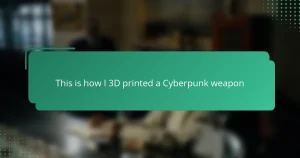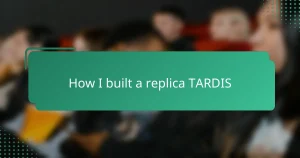Key takeaways
- Science fiction props, like the Ghostbusters proton pack and lightsabers, evoke emotion and enhance storytelling by transforming ideas into tangible objects.
- Proper preparation and the right materials are essential for painting props, including surface priming, masking, and using quality paints for a professional finish.
- Layering techniques, dry brushing, and washes help create realistic effects and depth, making props appear authentic and weathered.
- Adding detailed finishing touches, such as weathering and labels, enhances the realism of props, connecting the creator to the fictional universe.

What Are Science Fiction Props
Science fiction props are the physical objects that bring imagined worlds to life. From futuristic gadgets to alien weaponry, these items make stories tangible and believable. Have you ever paused to admire how a simple prop can spark your imagination instantly?
When I first got into building props, I realized they’re not just decorations. They carry the story’s emotion and character, telling you more about the universe than words alone ever could. It’s fascinating to see how a well-crafted prop can connect fans on a deeply emotional level.
What makes science fiction props truly special, in my opinion, is their blend of creativity and practicality. They require a balance of bold ideas and hands-on craftsmanship. This combination is what turns a piece of plastic and paint into a symbol of nostalgia and wonder.
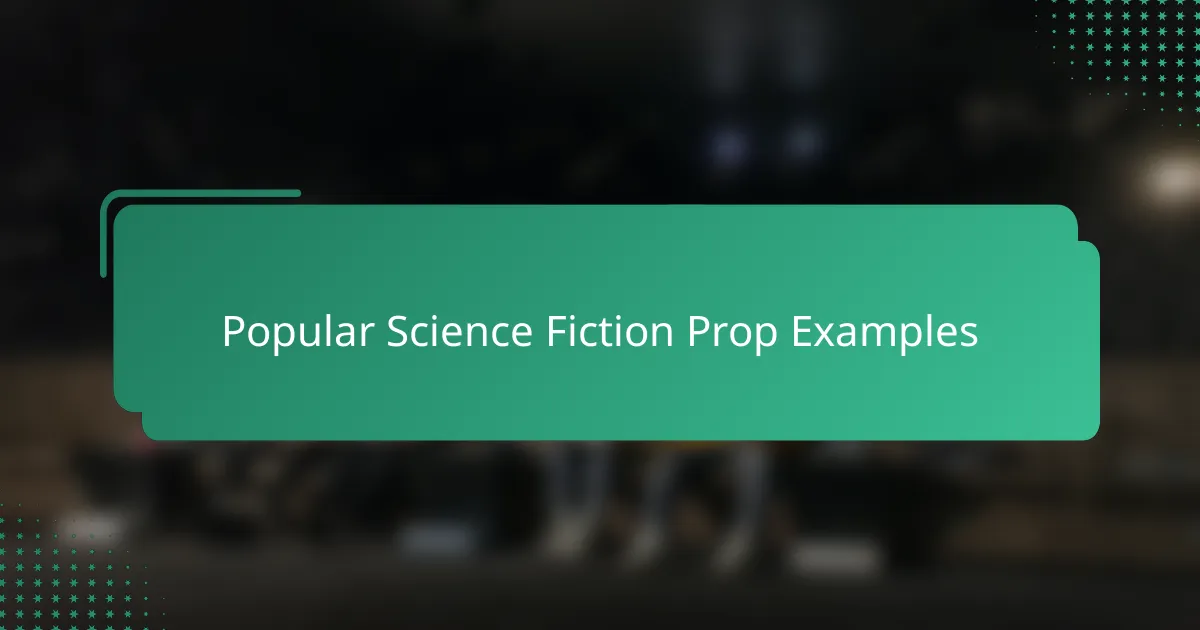
Popular Science Fiction Prop Examples
When I think about popular science fiction props, the Ghostbusters proton pack immediately comes to mind. It’s not just a nifty gadget; it’s a symbol of adventure and camaraderie that instantly transports fans back to those thrilling ghost-chasing scenes. Have you noticed how certain props like this become iconic because they capture the essence of the story so perfectly?
Lightsabers from Star Wars also hold a special place in my memory. I remember the first time I saw one—I was captivated by its glow and the idea of wielding a weapon powered by a mystical force. These props do more than look cool; they evoke a sense of heroism and endless possibility, don’t they?
Then there are props like the Star Trek communicator, which might seem simple but represent a leap into the future of communication. Building replicas of such objects always reminds me how science fiction inspires real technological dreams. It’s amazing how these props influence both imagination and innovation in equal measure.
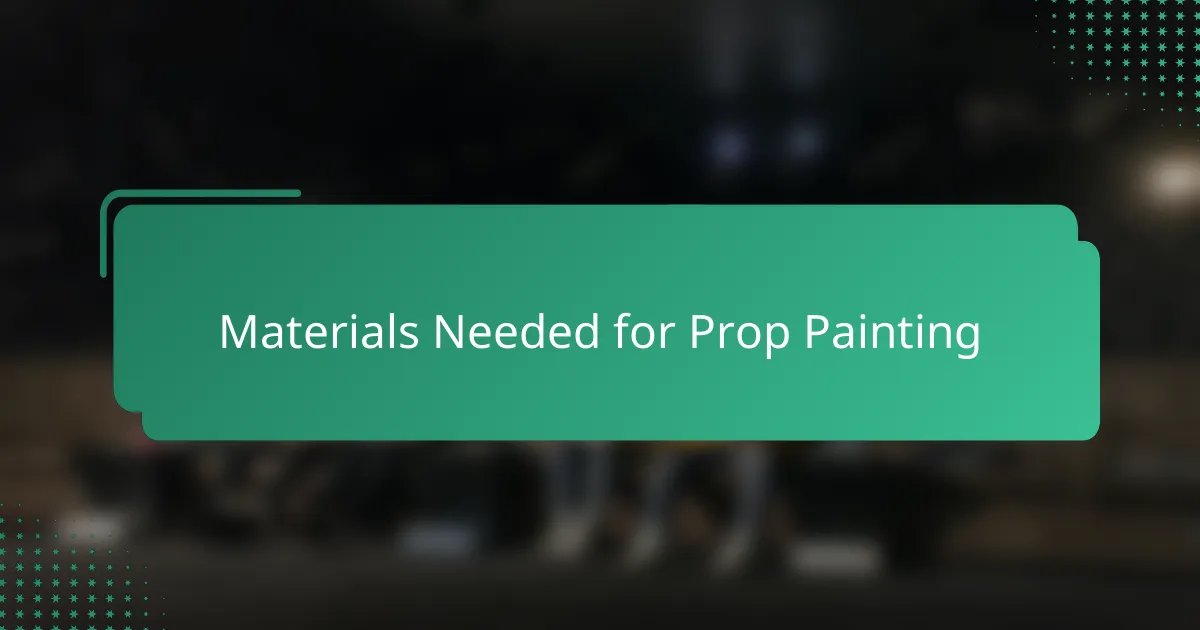
Materials Needed for Prop Painting
To bring a Ghostbusters proton pack replica to life, having the right materials for painting is absolutely crucial. I always start with quality paints—acrylics work great because they dry fast and offer vibrant colors, which is essential for capturing those iconic details. But it’s not just about the paint; having a good range of brushes in various sizes helps me tackle both broad surfaces and those tiny nooks with precision.
Ever realized how prepping the surface can make or break the final look? For me, primers and sandpapers are lifesavers—they create a smooth base that helps the paint adhere better and prevents unwanted lumps. Without this step, the paint tends to chip or look uneven, and that’s the last thing you want on a piece you’ve put so much effort into.
Another thing I always keep nearby is masking tape. It’s amazing how it helps me keep the sharp lines and clean edges that make the proton pack look professionally done. Plus, depending on the look you want, sealants come into play at the end to protect your hard work and give the prop either a glossy shine or a matte finish. Have you tried switching these materials around? It’s all about experimenting until you find that perfect balance.
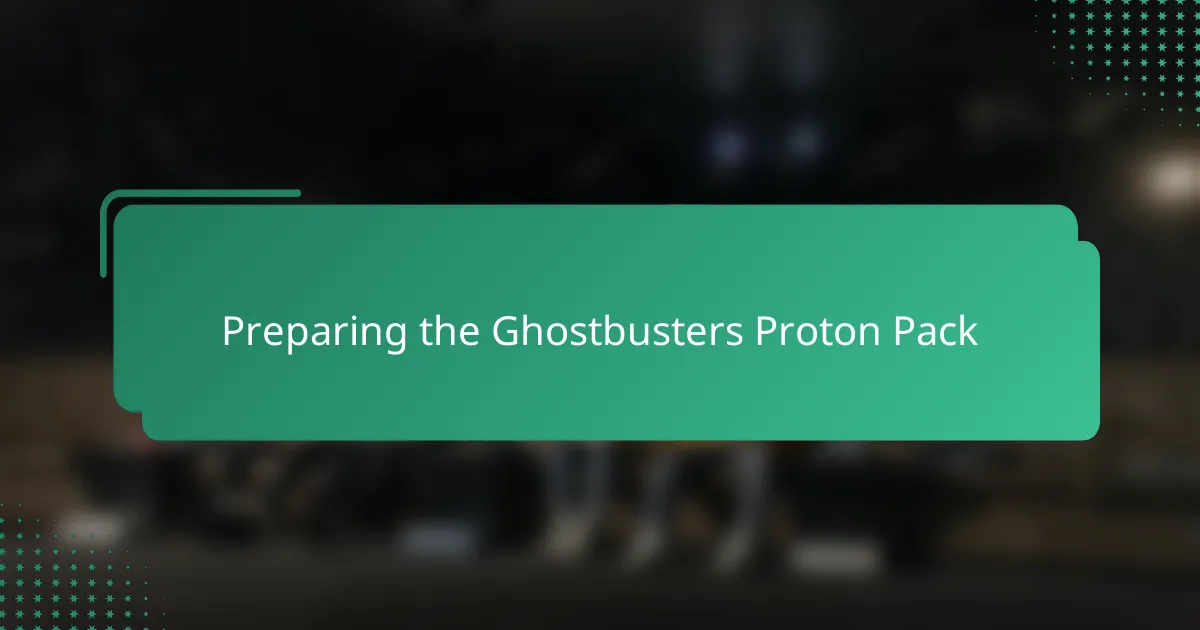
Preparing the Ghostbusters Proton Pack
Getting the Ghostbusters proton pack ready for painting is a step that really sets the tone for the entire project. I remember the first time I handled the raw replica—it felt rough and unpolished, like a blank canvas begging for some love. Sanding down every nook and cranny wasn’t just necessary; it felt like the start of something magical, smoothing out the surface so the paint could truly stick and shine.
One thing I’ve learned is that prepping the pack isn’t just about function; it’s about respecting the original design. Applying a good primer creates a base that makes the colors pop exactly as I imagined. Have you ever noticed how a primer can make even faded old paint look vibrant again? That transformation always feels rewarding and builds excitement for the next steps.
Masking off areas before I dive into painting is a small habit that saves me countless headaches. Precision matters so much with a prop like this—the clean lines around the wires and buttons really bring the pack to life. I find myself almost meditative during this part, carefully taping and taping, knowing these details will pull the whole look together in the end.
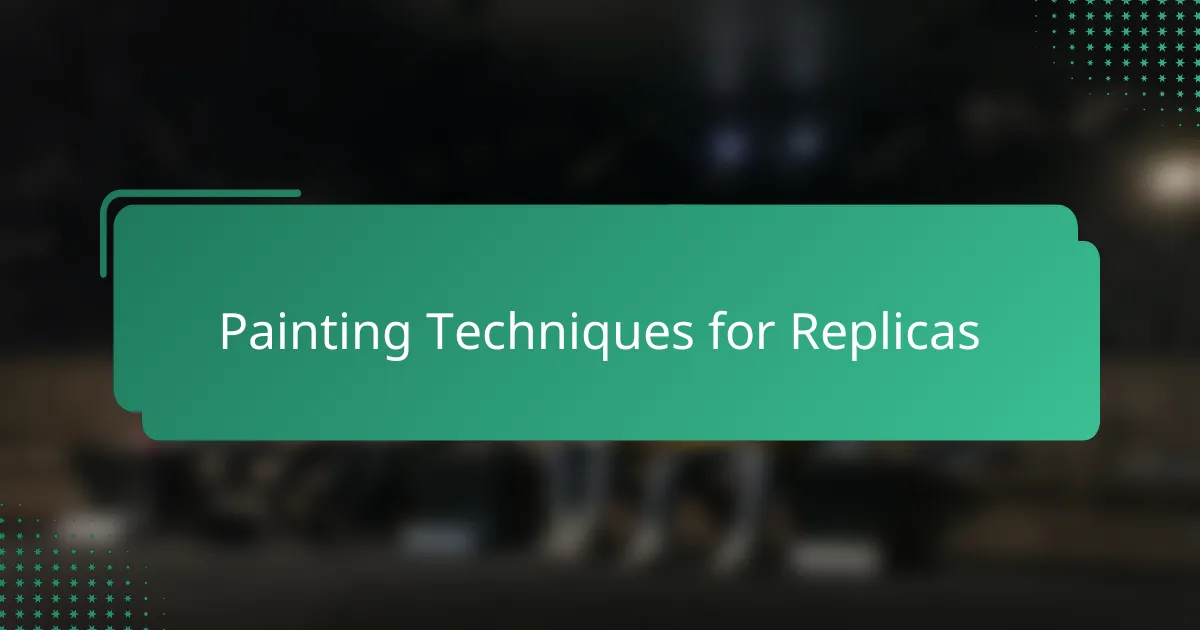
Painting Techniques for Replicas
When it comes to painting replicas like the Ghostbusters proton pack, layering is everything. I’ve found that applying thin coats of paint rather than one thick layer prevents drips and gives a depth to the colors that makes the prop look more realistic. Have you ever noticed how subtle shading can turn a flat piece into something that seems to have history and wear? That’s the magic of careful layering.
Dry brushing is another technique I swear by. It’s where you lightly drag a dry brush with a tiny bit of paint over the surface to highlight edges and textures. When I first tried this on the proton pack’s ridges, it instantly created a worn, lived-in effect that felt surprisingly authentic. It’s amazing how such a simple trick adds so much character without overwhelming the base colors.
Then there are washes—thin paints that settle into the crevices to bring out details and create shadows. At first, I was hesitant to use washes because I worried it might make the prop look messy. But experimenting showed me that controlled washes enhance every button and wire, making them pop just like on the original. Isn’t it fascinating how these techniques mimic the subtle imperfections of real equipment?
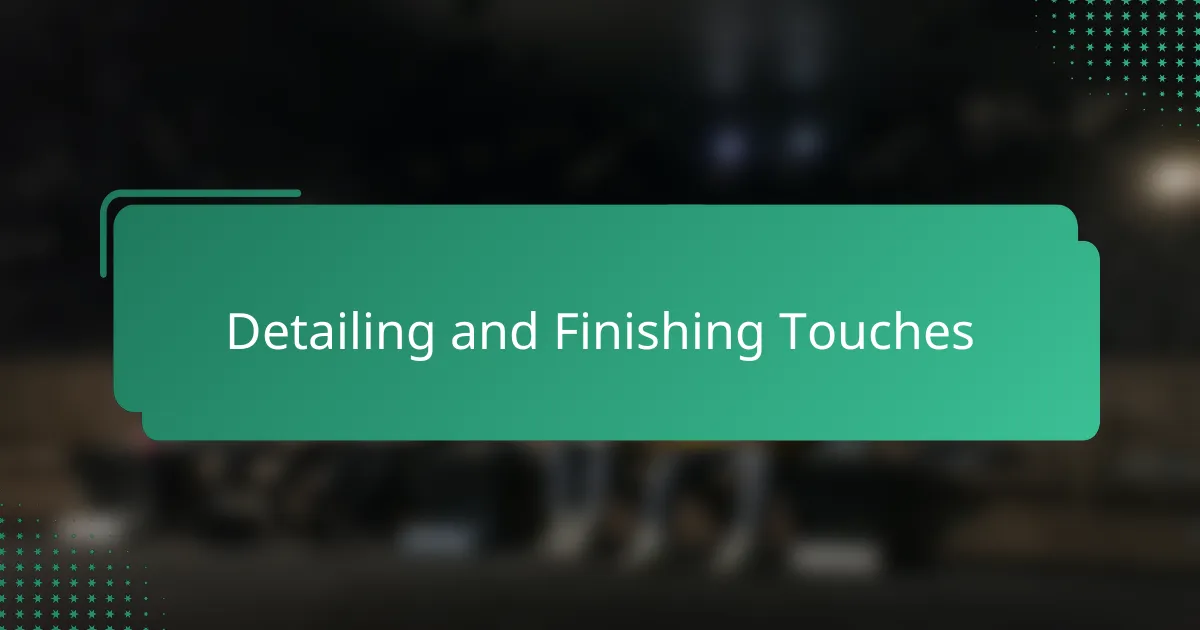
Detailing and Finishing Touches
Adding the final detailing and finishing touches to the proton pack felt like breathing life into the project. I remember carefully painting the tiny labels and warning signs with a fine brush—it was tedious, but each stroke made me feel closer to owning a piece of that legendary ghostbusting world. Have you ever felt that satisfaction when the smallest details suddenly transform a model from ordinary to extraordinary?
One technique I found invaluable was using weathering powders and subtle scratches to simulate wear and tear. It’s easy to overlook, but these imperfections tell a story—they make the pack look like it’s been through countless ghost hunts rather than just sitting on a shelf. When I stepped back and saw those distressed marks, I felt a real thrill; it was as if the prop had its own history.
Finally, sealing everything with a matte clear coat was like putting the cherry on top. It protected the paintwork while keeping that authentic, slightly rugged look. Have you noticed how a well-applied finish can either dull a masterpiece or preserve its soul? Getting this balance right was, for me, the key to making the proton pack feel truly finished and ready for action.
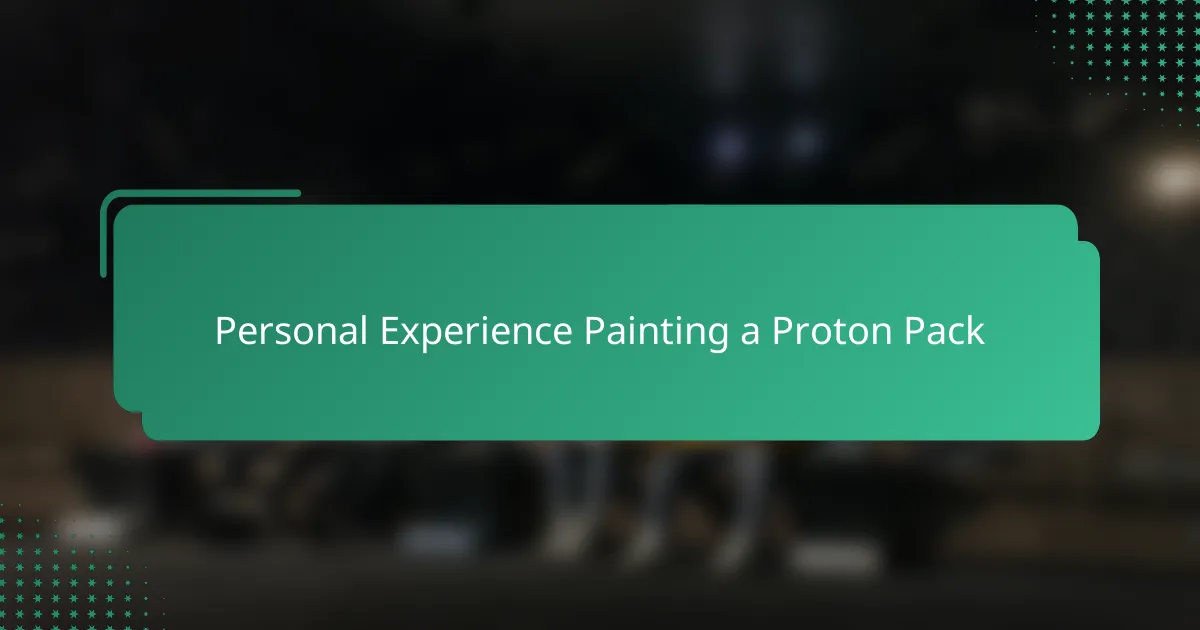
Personal Experience Painting a Proton Pack
Painting my Ghostbusters proton pack was an unexpectedly rewarding experience. I remember feeling a mix of excitement and nervousness as I laid down the first coat of black acrylic paint, wondering if I could really capture that iconic look. Each brushstroke felt like a small victory, especially when the colors started to pop and the details emerged from the dull base.
One moment that stuck with me was struggling with the layering process. At first, I was tempted to cover everything quickly with one heavy coat, but patience taught me better. Applying thin layers slowly built depth and that weathered look I was after. Have you ever had to remind yourself that in painting—like in life—taking it slow often leads to better results?
Adding the finishing details was like telling the final chapter of a story I’d been living for days. Painting tiny labels and weathering marks demanded my full attention, but it also connected me deeply to the Ghostbusters universe. I found myself smiling, imagining all the adventures this pack might have seen. Isn’t it fascinating how a simple paint job can turn plastic into a vessel of nostalgia and imagination?

